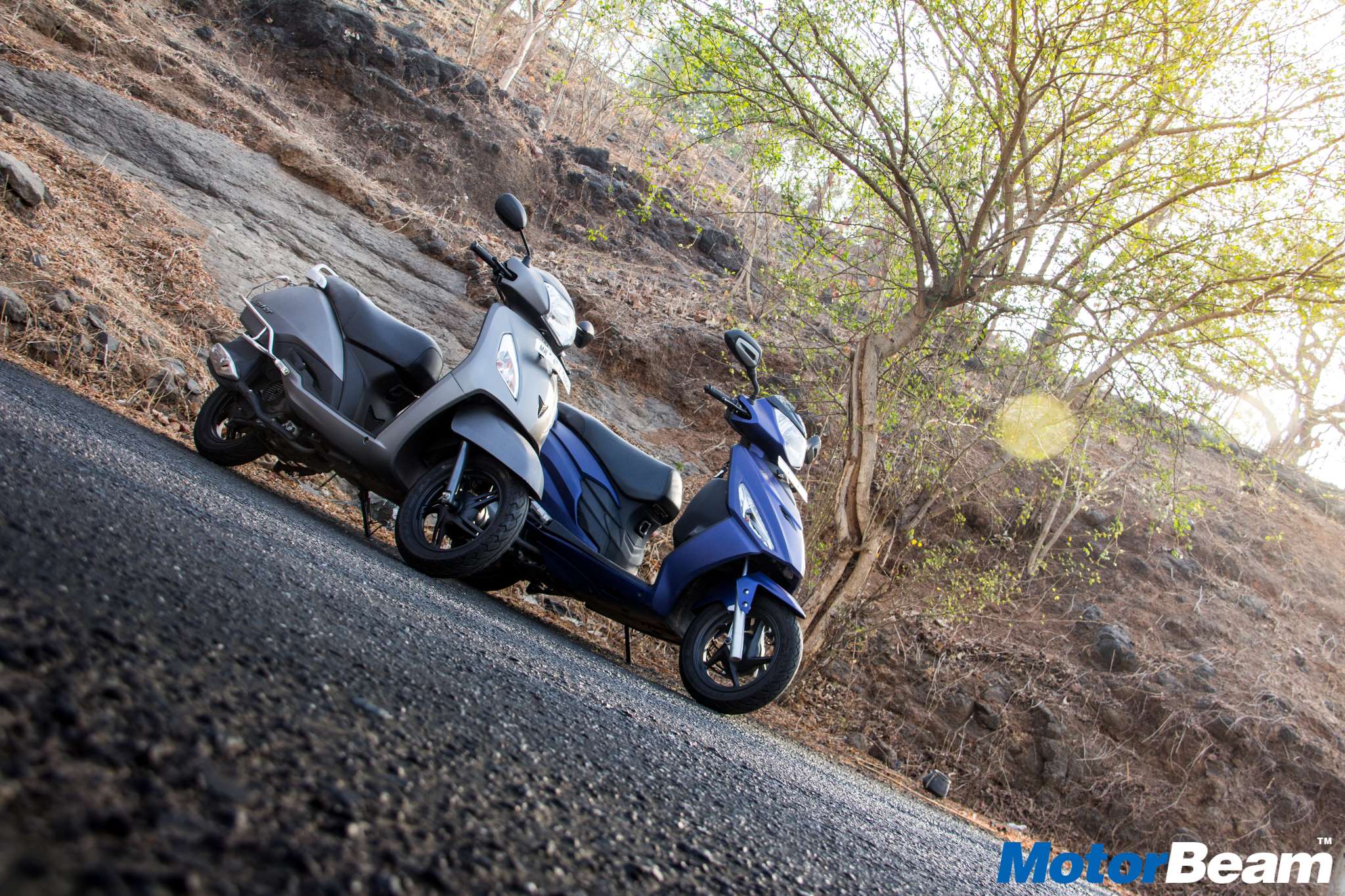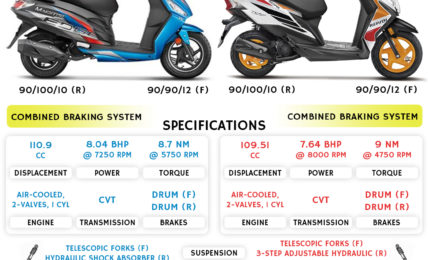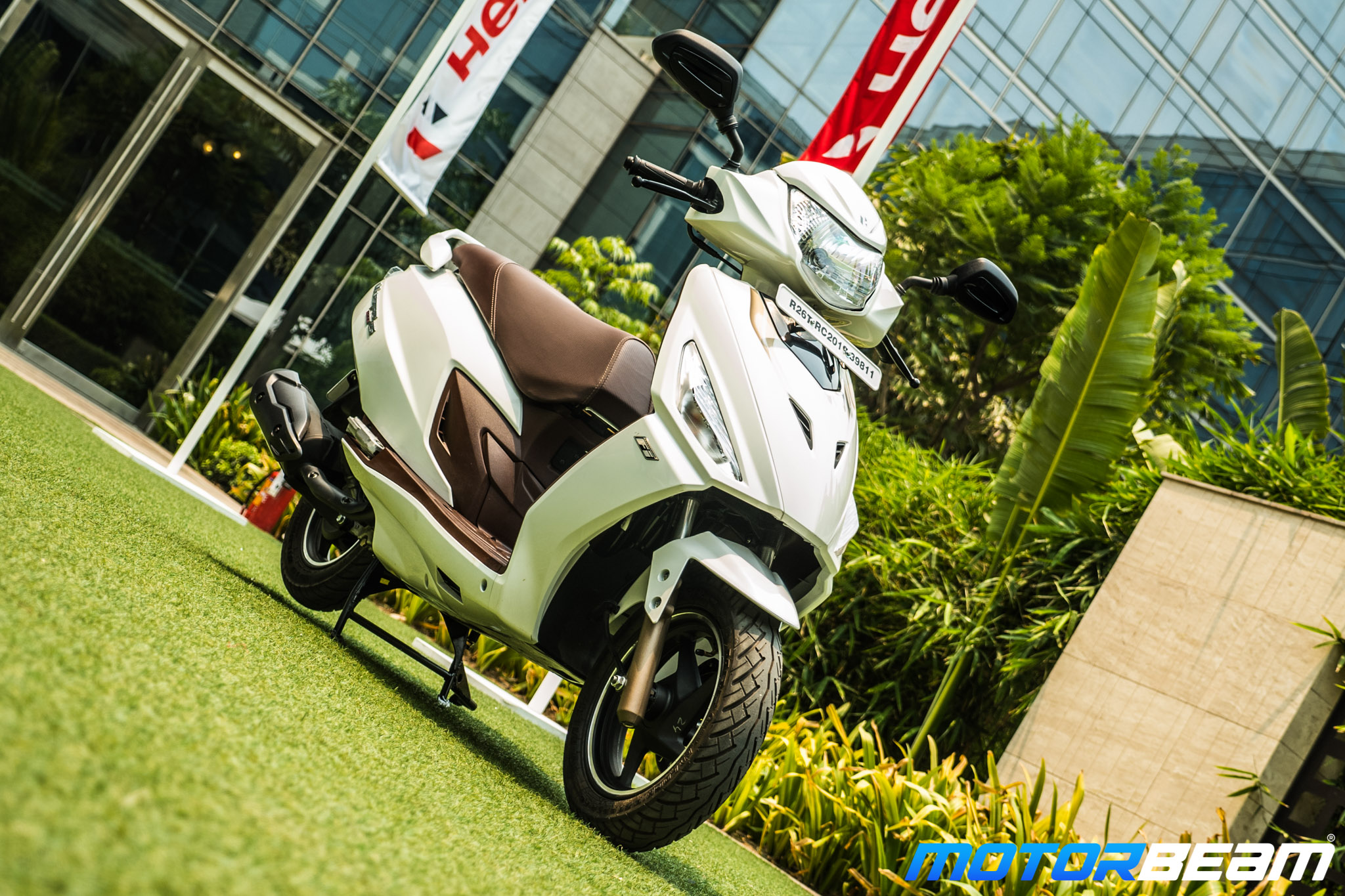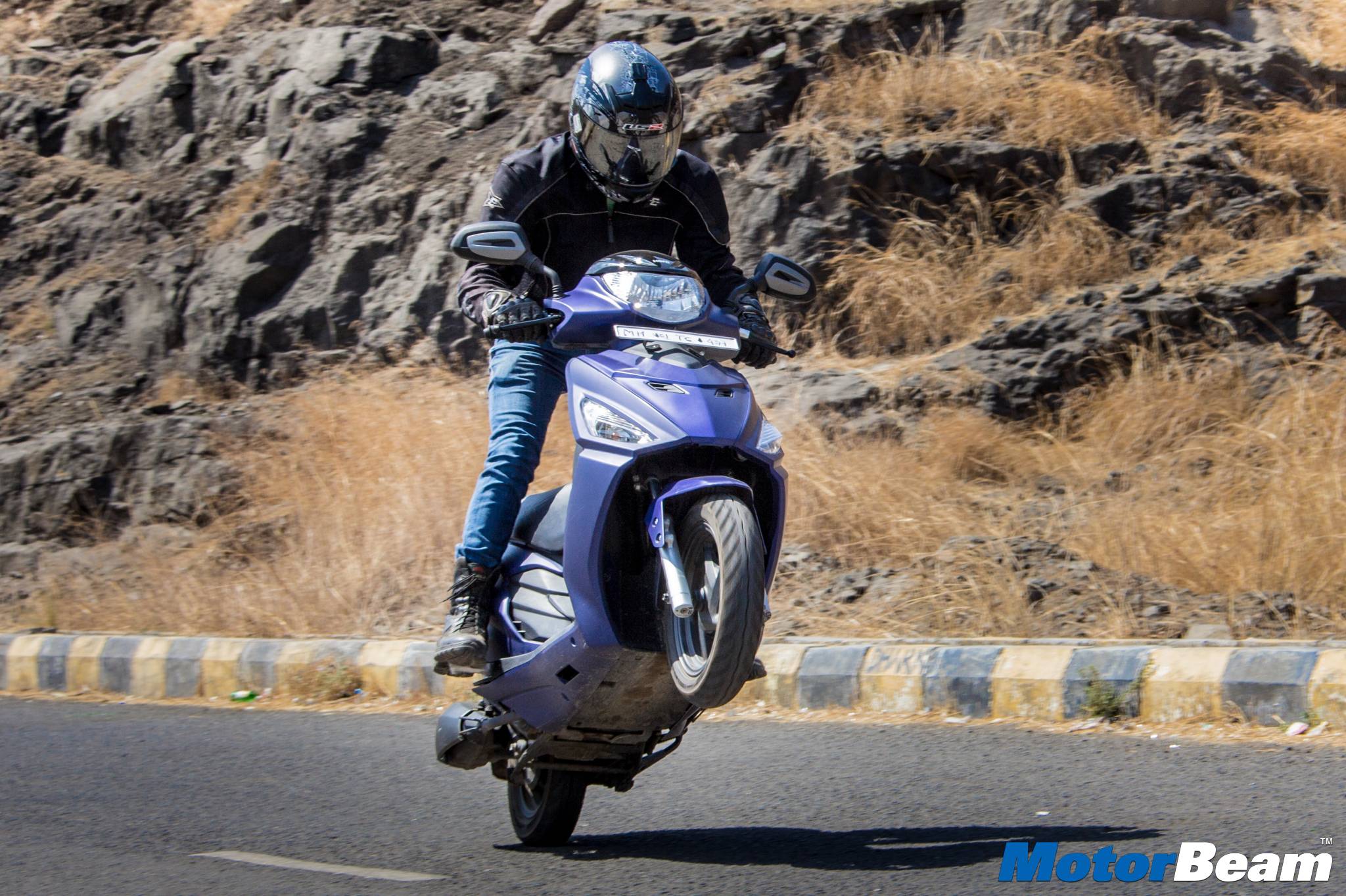
Shootout: TVS Jupiter vs Hero Maestro Edge
Shootout No. 161
Price OTR Mumbai: Rs. 64,718/- (TVS Jupiter), Rs. 64,544/- (Hero Maestro Edge)
The TVS Jupiter is one of the best 110cc scooters but the Hero Maestro Edge promises a lot
Scooters in India have a major holding of the 2-wheeler market, majorly dominated by Honda while competitors have a better reach in particular sections of India. Honda is actually the market leader but nowadays people are looking into having something different in their vehicles. More features, better hardware and comparatively cheaper cost makes way for intense competition. The TVS Jupiter and Hero Maestro Edge are two scooters we’ve found to be gaining up on attention and threatening the market leader too. Both these scooters are here for a head-to-head shootout.
Motor Quest: The TVS Jupiter was launched in 2013 and it has been through very few cosmetic changes and numerous colour updates over the years. The Hero Maestro Edge is however a Hero Maestro with a complete makeover, launched in 2015. Both the scooters have something in common – their approach towards the male segment of the respective companies.
Both scooters have a unique design that looks good
Styling – Both scooters have completely different design concepts, the Hero Maestro Edge, as the name suggests, has a very edgy design while the TVS Jupiter stays subtle and smooth comparatively. For instance, the front headlamp of the Jupiter is curvy at the edge and has a normal rectangular shape while the headlamp of the Maestro Edge has a pointy edge and also gets a tiny visor above it. The 10-spoke, 12-inch alloy wheels do the job on the Jupiter while the Maestro Edge has an asymmetric option of a 12-inch alloy at the front and a 10-inch alloy at the rear.
The pictures say it all – sharpness vs smoothness
The Hero Maestro Edge looks much fresher than the TVS Jupiter
All body panels, from the front mudguard to the tail-lamp have an edgy triangular concept on the Hero Maestro Edge while on the TVS Jupiter, the body panels are very simple and smooth. This stands true even in case of the rear grab-rail. The exhaust on the Maestro is a protruding unit with a designed cover on it while the same on the Jupiter goes within the body with a small chrome plate on it.
The instrument console on the Maestro has a unique design with an LCD
Instrument Cluster and Switchgear – The instrument cluster on the Maestro looks newer and it also features a small digital unit which displays the service interval, fuel gauge, trip meter and odometer. The Jupiter however features a simple console which is completely analog. Yet the console on the Jupiter is easy to read while the Maestro’s console feels a lot clustered together. However, the simple console on the Jupiter provides lesser information than the one on the Maestro. It misses out on a side stand indicator and trip meter which comes on the Maestro.
The instrument console is rather simple and clean on the Jupiter
The console on the Jupiter has a ECO/Power mode indicator which isn’t present on the Maestro. The switchgear is pretty much similar to each other, both having a piano finish. The Maestro however has a silver background to the switchgear while the same on the Jupiter stays simple. Even with the jazz over the design, the quality of the switchgear is however better on the Jupiter as compared to that on the Maestro. The complete handlebar unit feels more stylish on the Maestro but at the same time also feels heavier than the Jupiter’s unit.
Decent scooter ergonomics with good amount of comfort do the job on both scooters
Ergonomics – The ergonomics of both the scooters are at par with each other. Seat height has a mere difference of 10 mm with the Jupiter being lower. The Maestro is a bit heavy at 110 kgs while the Jupiter is 3 kgs lighter. This does make a difference in the ride-ability of both the scooters. Both the scooters have the same rigid underbone chassis but the Jupiter provides more leg space on the footboard. The cushioning of the seats for both the scooters is soft while the Jupiter’s is a bit softer. Footpegs for the pillion are uncomfortable on both the scooters.
Better initial performance gives the TVS Jupiter a peppy launch
Performance – Both the scooters are very similar in performance too as both of them feature a 110cc CVT engine. The power and torque figures are almost the same. The Maestro churns out a bit more of both at a slightly higher RPM. Even though both the engines are similar, the power delivery and response is completely different. The Jupiter has an amazing initial performance while the Maestro is more lively in the higher-end. The Jupiter is quicker as it gains speed very quickly right from 15 km/hr, however the Maestro becomes more responsive post 50 km/hr. The Maestro even has the better top speed.
The Hero Maestro Edge has a better top speed
Dissimilar nature of the 110cc engines results in completely vivid performance
Both the engines are different in nature and the NVH levels also differ a lot. The Jupiter is smooth with its initials and builds up some vibrations in the top-end. While the Maestro is completely opposite, the engine feeds significant amount of vibrations at the beginning and smoothes as we gain speed. The so called rev-range for the Jupiter is from 20 km/hr to 65 km/hr while the same for the Maestro Edge is 40 km/hr to 80 km/hr.
Head-to-head and they are capable of burning rubber
The engine on the TVS Jupiter is ideal for the city and areas where zipping through is more of an option. However the Maestro’s engine is more suited for the highway and longer travel. There is slight harshness felt from the engine of the Maestro. Comparatively the engine isn’t as harsh on the Jupiter. There is a peculiar sound from the exhaust of the Maestro Edge which is actually a good exhaust note for a scooter. Overall, the engine on the Jupiter is slightly superior as compared to the one on the Maestro.
The Hero Maestro Edge has a better stability advantage
Riding Dynamics – Not much can be said about the riding dynamics as a scooter will always ride like a scooter, but there are some things in which both the Jupiter and the Maestro perform differently. The lighter weight and peppy response makes the Jupiter flick very quickly. It is a complete fun to ride scooter in traffic as it just zips through traffic. The Maestro on the other hand stays very stable and has good straight line stability. The Maestro stays much more planted while cornering too.
On clean tarmac, both the scooters feel like home with good grip on offer
The TVS Jupiter is agile and is more fun to zip around in urban traffic conditions
The MRF tyres on the Hero Maestro Edge do a great job as they grip really well, the TVS Jupiter however has the set of TVS tyres which have decent grip but not as much as the MRFs do. Under hard braking, the TVS skids easily while the same with MRF on the Maestro has lesser skidding due to Hero’s Integrated Braking System (IBS). Both the scooters have a similar suspension setup – telescopic at the front and spring loaded suspension at the rear, which gives them a very pleasant ride quality.
The TVS Jupiter is however more flickable than the Hero Maestro Edge
Verdict – The Hero Maestro Edge and TVS Jupiter are very strong competitors. Both have their own set of positives and negatives. While the Maestro is feature rich and has better looks, the Jupiter brings itself up with a bit more refined engine. Choosing one among these two is very difficult, but a winner by a margin is still a winner. Although the Maestro is newer here, the Jupiter’s smoother engine is the decision maker and makes it win. However if the subjective looks and features matter more, then the Hero Maestro surely has the Edge over the TVS Jupiter.
Both these scooters are worthy competitors from their respective manufacturers
Testers’ Note:
Further Reading –
TVS Jupiter Review
Hero Maestro Edge Review
Hero Maestro Edge Video Review




